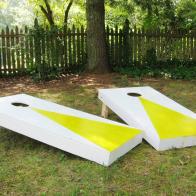1 / 24
Photo: Raquel Langworthy
A Traditional Home Is Updated and Refreshed for Family Gatherings
When a couple of empty nesters approached New Jersey-based interior designer Victoria Bell about designing their renovation, she got right to work creating their perfect space. It's a charming spot where family can gather and feel right at home, with a sophisticated design centered around family memories and heirlooms.









